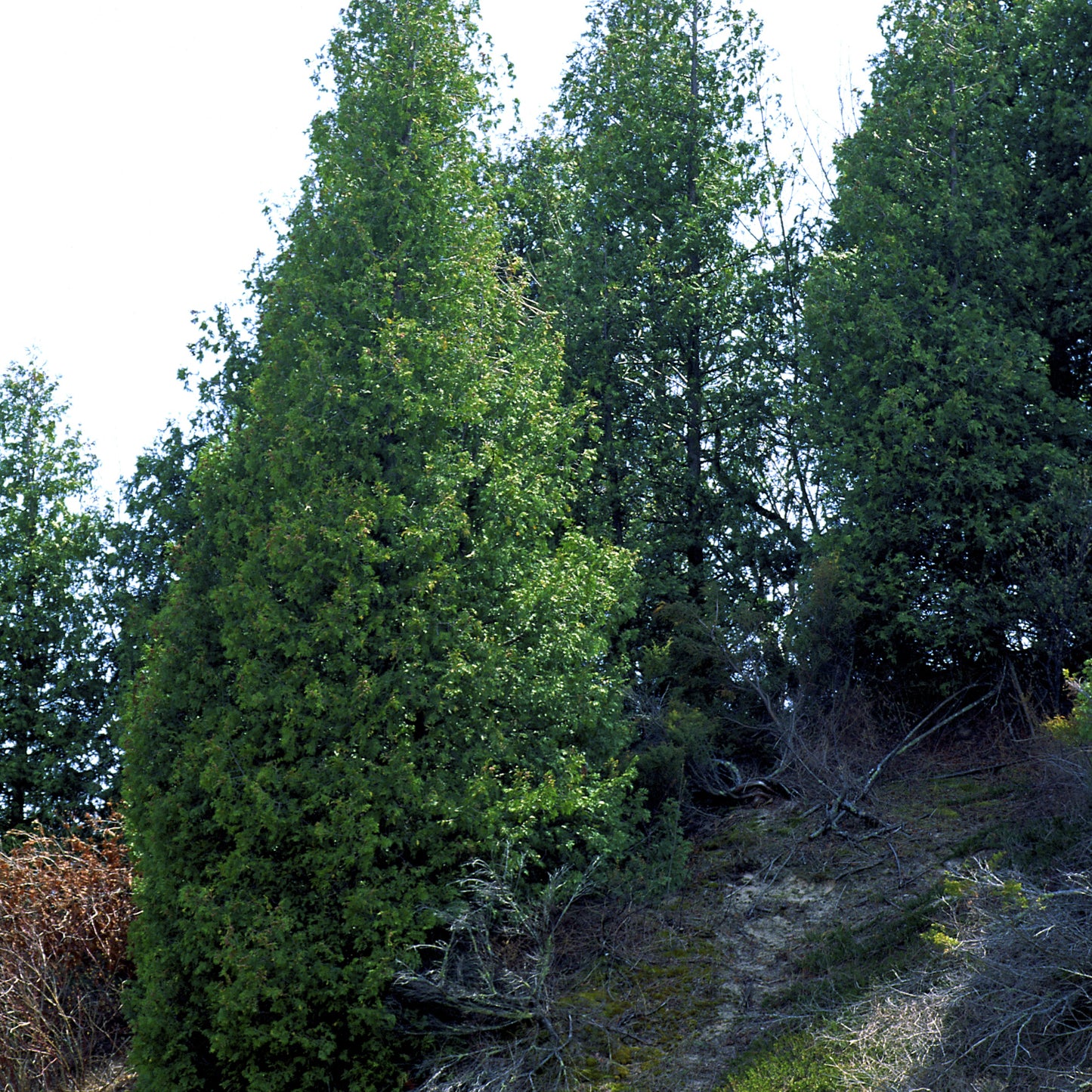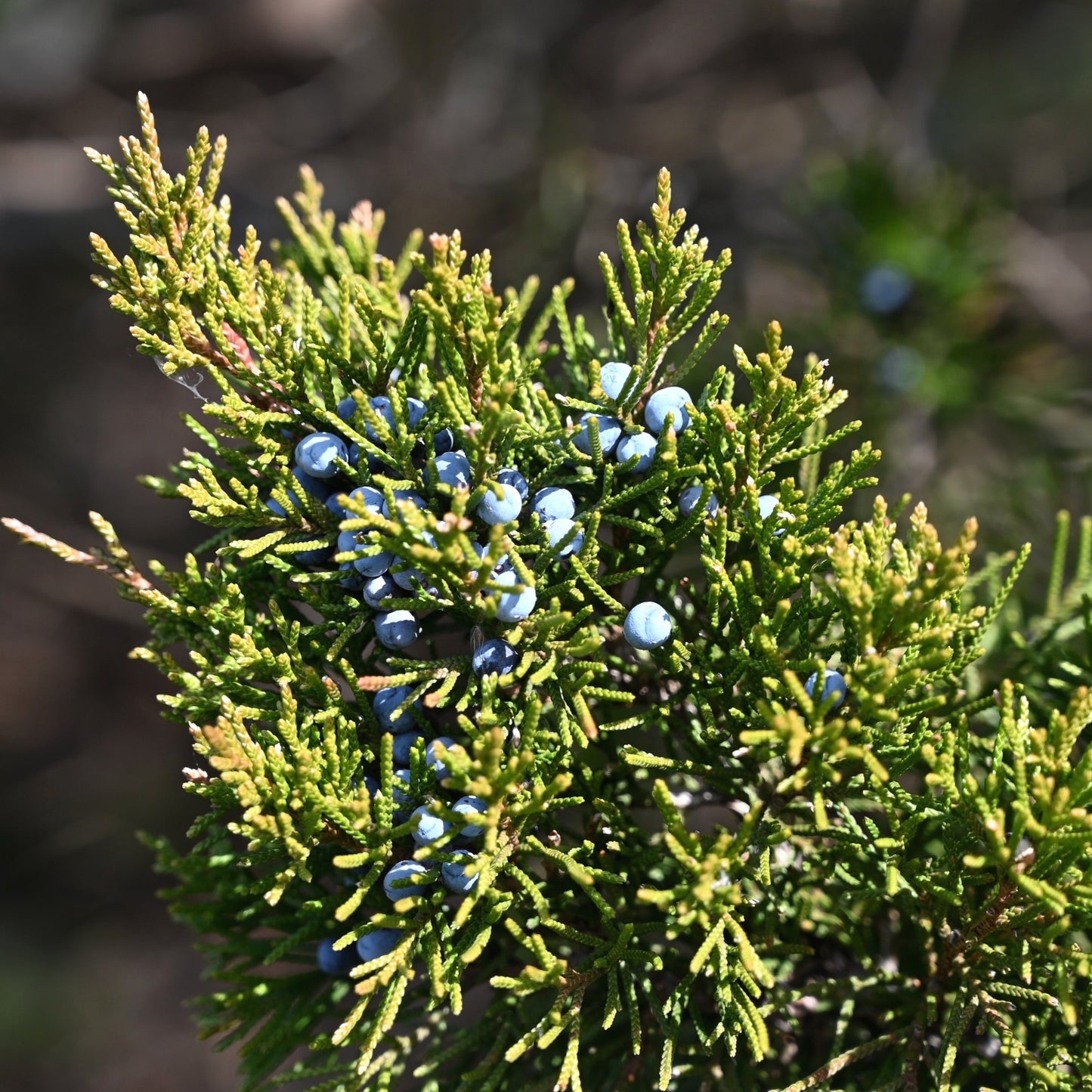Limited Quantities - Reserve Now For Fall
Eastern Red Cedar Tree
Eastern Red Cedar Tree
Couldn't load pickup availability
Juniperus virginiana
The Eastern Red Cedar Tree is a tough, evergreen conifer prized for its dense foliage, aromatic wood, and ability to thrive in a variety of conditions. This drought-tolerant, fast-growing tree provides year-round greenery, essential wildlife habitat, and erosion control. With its pyramidal shape, deep green foliage, and blueish-gray berries, the Eastern Red Cedar is an excellent choice for privacy screens, windbreaks, and naturalized landscapes.
Eastern Red Cedar Tree
| Attribute | Details |
|---|---|
| Variety | Rooted |
| Botanical Name | Juniperus virginiana |
| Common Names | Eastern Red Cedar, Red Juniper, Pencil Cedar |
| Mature Height | 30-50 feet |
| Mature Width | 8-20 feet |
| Growth Rate | Moderate to Fast (1-2 feet per year) |
| Lifespan | 100-300 years |
| USDA Hardiness Zones | 2-9 |
| Sun Preference | Full sun (6+ hours of direct sunlight) |
| Soil Type | Well-drained, loamy, sandy, rocky, or clay soils |
| Soil pH | Slightly acidic to alkaline (6.0-8.0) |
| Water Needs | Low; drought-tolerant once established |
| Foliage Color | Dark green to bluish-green, evergreen year-round |
| Fruit | Small, blue-gray berries (cones) |
| Wildlife Attraction | Birds, pollinators, deer, small mammals |
| Growth Habit | Pyramidal, dense branching |
| Self-Pollinating? | Yes |
| Landscape Uses | Windbreaks, privacy screens, erosion control, wildlife habitat, timber production |
| Maintenance Level | Low |
Environmental Benefits
🌱 Drought-Resistant & Soil Adaptable – Thrives in poor, dry, and rocky soils, making it an ideal tree for challenging landscapes.
🐦 Wildlife Habitat & Food Source – Produces small, berry-like cones that provide food for birds and small mammals while offering dense shelter for nesting.
🌿 Erosion Control & Wind Protection – Deep root system helps stabilize soil, making it excellent for preventing erosion on slopes and disturbed land.
🌎 Air Purification & Carbon Sequestration – Improves air quality by absorbing pollutants and capturing carbon dioxide.
Pros & Cons
| Pros | Cons |
|---|---|
| Drought-resistant and thrives in poor soil | Can spread aggressively if not managed |
| Provides dense privacy and wind protection | Produces pollen, which may trigger allergies |
| Attracts birds and supports wildlife | Wood is flammable, so not ideal near structures in fire-prone areas |
| Low-maintenance and disease-resistant | Not ideal for wet, poorly drained soils |
| Long-lived and highly durable | May require occasional pruning to maintain shape |
Planting & Care Guide
- Spacing: Plant 8-20 feet apart for individual trees or 4-6 feet apart for a dense hedge
- Soaking: Soak bare root in water for 6-12 hours before planting
- Planting Depth: Dig a hole twice the width of the root system, ensuring roots are level with the soil surface
- Mulching: Apply a 2-3 inch layer of mulch to retain moisture and suppress weeds
- Pruning: Minimal pruning required; remove dead or lower branches as needed
- Fertilization: Not typically needed, but can be supplemented with slow-release fertilizer in early spring
- Watering: Water deeply once or twice per week during the first year, then reduce as the tree matures
The Eastern Red Cedar Tree is a rugged, adaptable, and long-lived conifer that provides privacy, wind protection, and wildlife benefits with minimal maintenance. Whether planted as a hedge, windbreak, or shade tree, this versatile and resilient tree is an excellent choice for both residential and commercial landscapes.
Share






